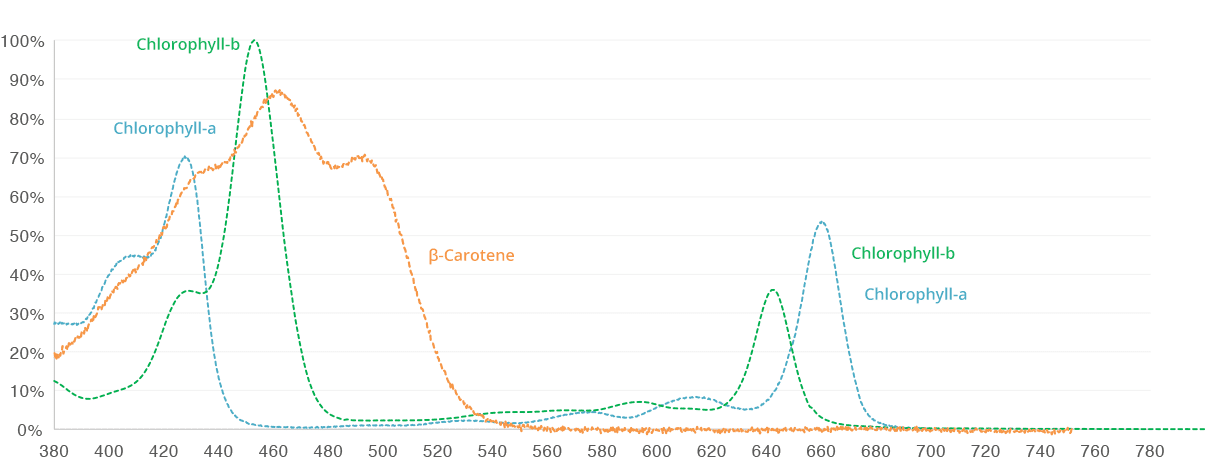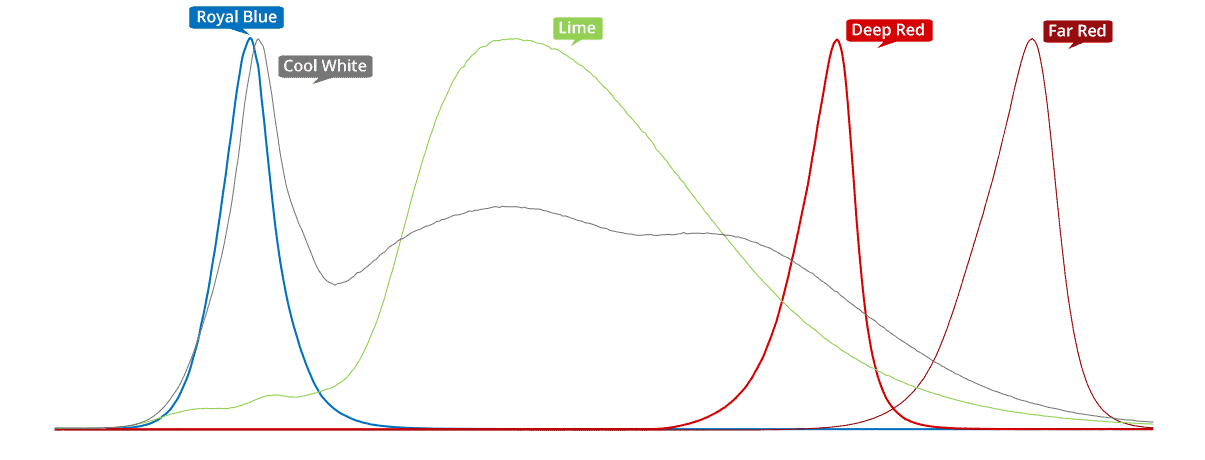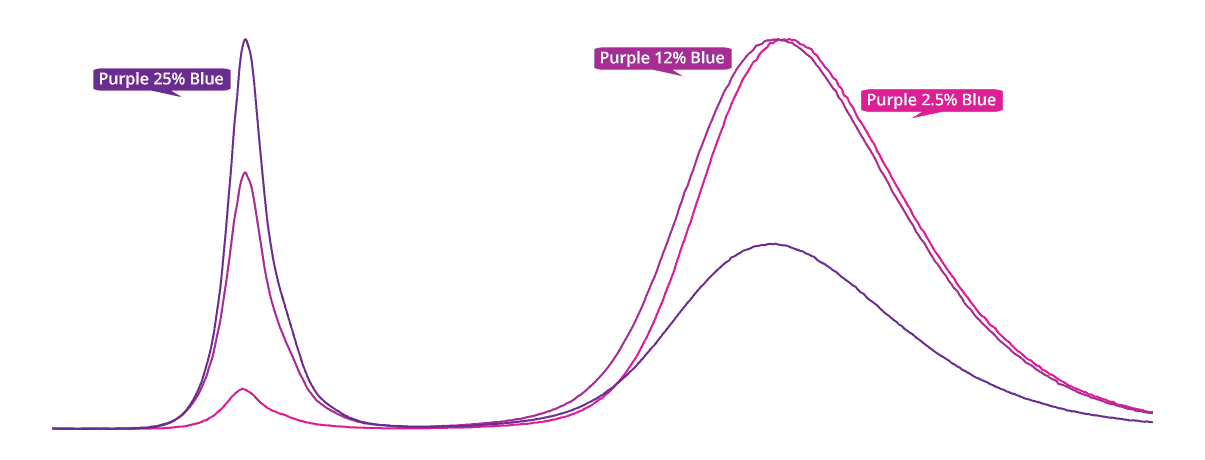The Science Behind LUXEON SunPlus Series
Humans and plants care about different wavelengths of the light spectrum. While human vision has evolved to be more sensitive to green light, plants absorb blue and red and reflect most of the green light (hence their green appearance). Therefore, lumens, which is the typical unit of light that is used for LED illumination, is not useful for plants. For growth and vital activities, plants need Photosynthetic Photon Flux (PPF).
The rate of photosynthesis is determined by the amount of photons between the Photosynthetic Active Region (PAR), from 400nm to 700nm. This growth light is called Photosynthetic Photon Flux (PPF) and it is measured in µmol/s. The efficiency of the light source for plant growth is measured in µmol/J.
LUXEON SunPlus Series provides all generated photons in the right wavelengths of the absorptions peaks






Photosynthesis in plants depend on absorbing light energy in specific wavelengths.
Toggle the buttons below to compare the spectra offered by different sources of light.
LUXEON SunPlus LEDs
Other Lighting Solutions
Chlorophyll-a
Absorption peaks at 430nm and 662nm
Chlorophyll-a is the primary pigment for photosynthesis in plants. It exhibits a grass-green visual color. It occurs in all photosynthetic organisms except photosynthetic bacteria.
Chlorophyll-b
Absorption peaks at 453nm and 642nm
There is usually about half as much cholorphyll-b as the -a variety in plants. Exhibits a blue-green visual color. It occurs in all plants, green algae and some prokaryotes.
Carotenoids (a/-Carotene, Lycopene, Xanthophyll)
Absorption is strong between 420nm and 485nm
Carotenes are strongly colored red-orange pigments abundant in plants, fruits, vegetables, and whole grains. Xanthophylls are the typical yellow pigments of leaves. Carotenoids contribute to photosynthesis and protects from excessive light damage.